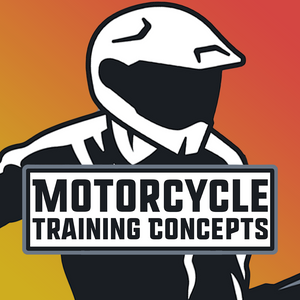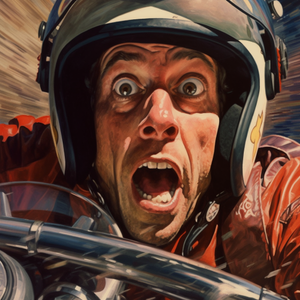How to Improve Your Braking Skills: 5 Essential Tips
I wanted to expand on Nathan and his great braking lesson from the Basic SMART Rider Course (U3L13). Here are my thoughts and some tips for you to take with you this week when you are out riding!
In this article, we'll explore five key tips to improve your motorcycle braking skills. These tips will help you gain more control over your motorcycle, allowing you to ride more safely and confidently. We'll dive into:
- Practicing Progressive Braking
- Balancing Braking Using Both Brakes
- Understanding Your Motorcycle's Braking Limit
- Applying Brakes Smoothly and Controlled
- Mastering Emergency Braking

1. Practicing Progressive Braking
Progressive braking is an essential skill for any motorcycle rider. Rather than applying a sudden burst of braking power, progressive braking involves slowly and steadily increasing your brake application.
Key points to remember about progressive braking are:
- Gradual Application: The first step in progressive braking is learning to apply your brakes gradually. Sudden braking can lead to skidding or a loss of control.
- Avoid Locking Up: By gradually increasing the pressure on your brakes, you can avoid the wheels locking up, which could potentially cause an accident.
- Practice Makes Perfect: To get the feel of progressive braking, practice it in a safe, controlled environment. The more you practice, the more natural it will become.
2. Balancing Braking Using Both Brakes
For balanced braking, both the front and rear brakes need to be used effectively. This creates an even distribution of braking power and enhances stability during stops.
Three important aspects of balanced braking include:
- Simultaneous Use: The key to balanced braking is using both your front and rear brakes at the same time.
- Understanding Brake Distribution: Typically, the front brake provides 70-75% of your total stopping power, while the rear brake contributes the remaining 25-30%. Learn how to distribute your braking power effectively.
- Avoiding Over-reliance: Don't rely too much on one brake. Overusing either brake can lead to instability and loss of control.

3. Understanding Your Motorcycle's Braking Limit
Knowing your motorcycle's braking limit in different conditions is crucial for your safety.
For this, consider the following three points:
- Brake Responsiveness: Understand how responsive your brakes are. This will vary depending on your motorcycle model and the condition of your brakes.
- Surface Conditions: Your motorcycle's braking limit will change based on the road surface, whether it's dry, wet, or gravel.
- Load: The load your motorcycle is carrying (including rider, passenger, and any cargo) will also affect its braking limit.
4. Applying Brakes Smoothly and Controlled
Smooth and controlled brake application helps prevent skidding and maintains stability.
Three important points about smooth braking are:
- Avoid Panic Grabs: Quick, panic-induced grabs of the brake can lead to skidding or even a crash. Practice calm, controlled braking.
- Consistent Pressure: Apply consistent pressure to your brakes. This means not just pressing harder or softer randomly, but keeping a steady pressure.
- Practice Smooth Transitions: Work on making smooth transitions from acceleration to braking, and vice versa.

5. Mastering Emergency Braking
Practicing emergency braking in a safe environment can help you prepare for unexpected situations.
Here are three key points to remember:
- Preparation is Crucial: You never know when you might need to stop suddenly. Regular practice of emergency braking can be a lifesaver.
- Balance is Key: In an emergency, it's crucial to maintain balance while applying the brakes to avoid tipping or skidding.
- Train Your Reaction Time: The quicker you can react and apply your brakes in an emergency, the better. Training can improve your reaction time significantly.
By following these tips and regularly practicing your braking skills, you'll be a safer, more confident rider on the road. Always remember, riding is not just about speed and thrill; safety should be your number one priority.

